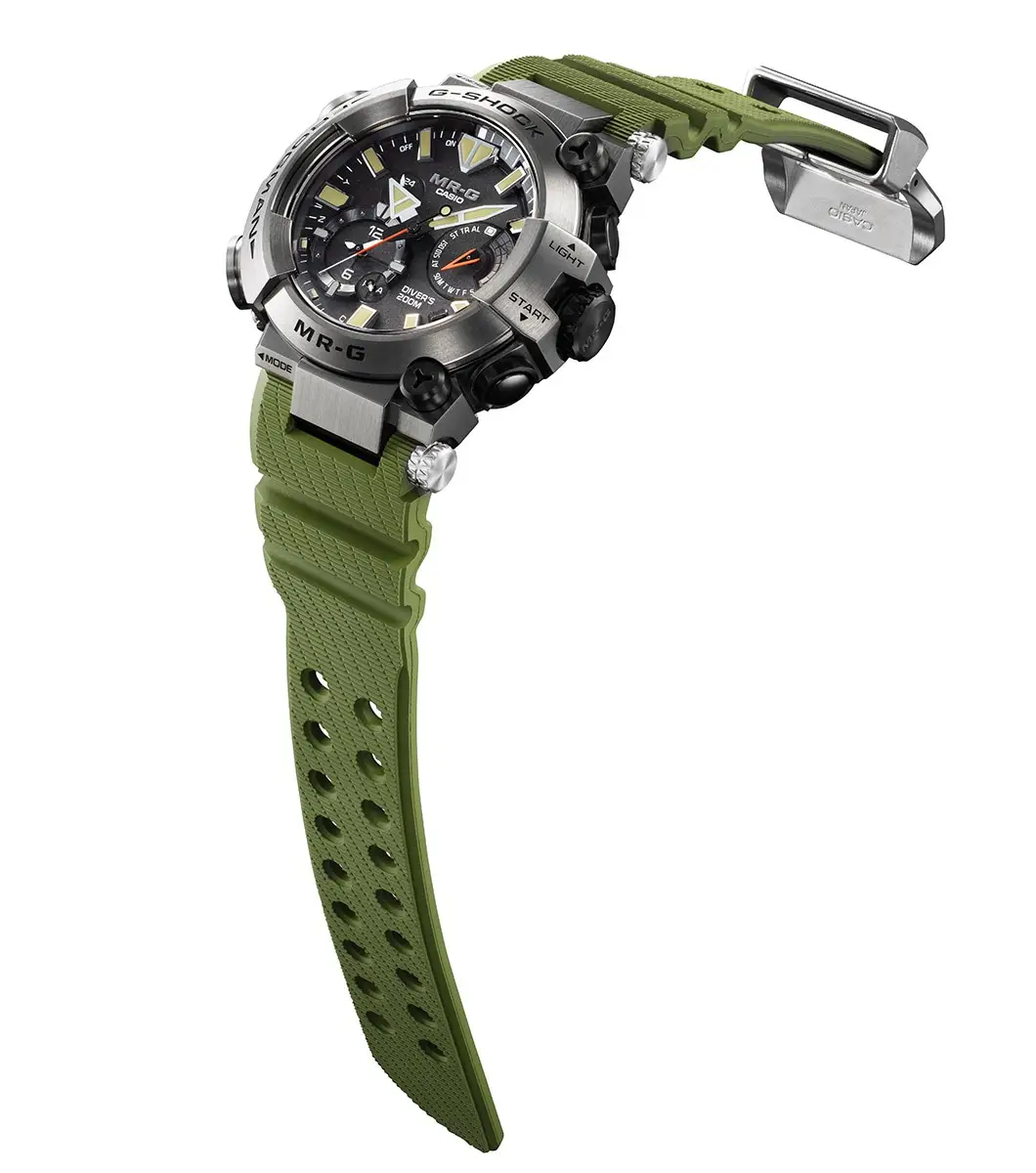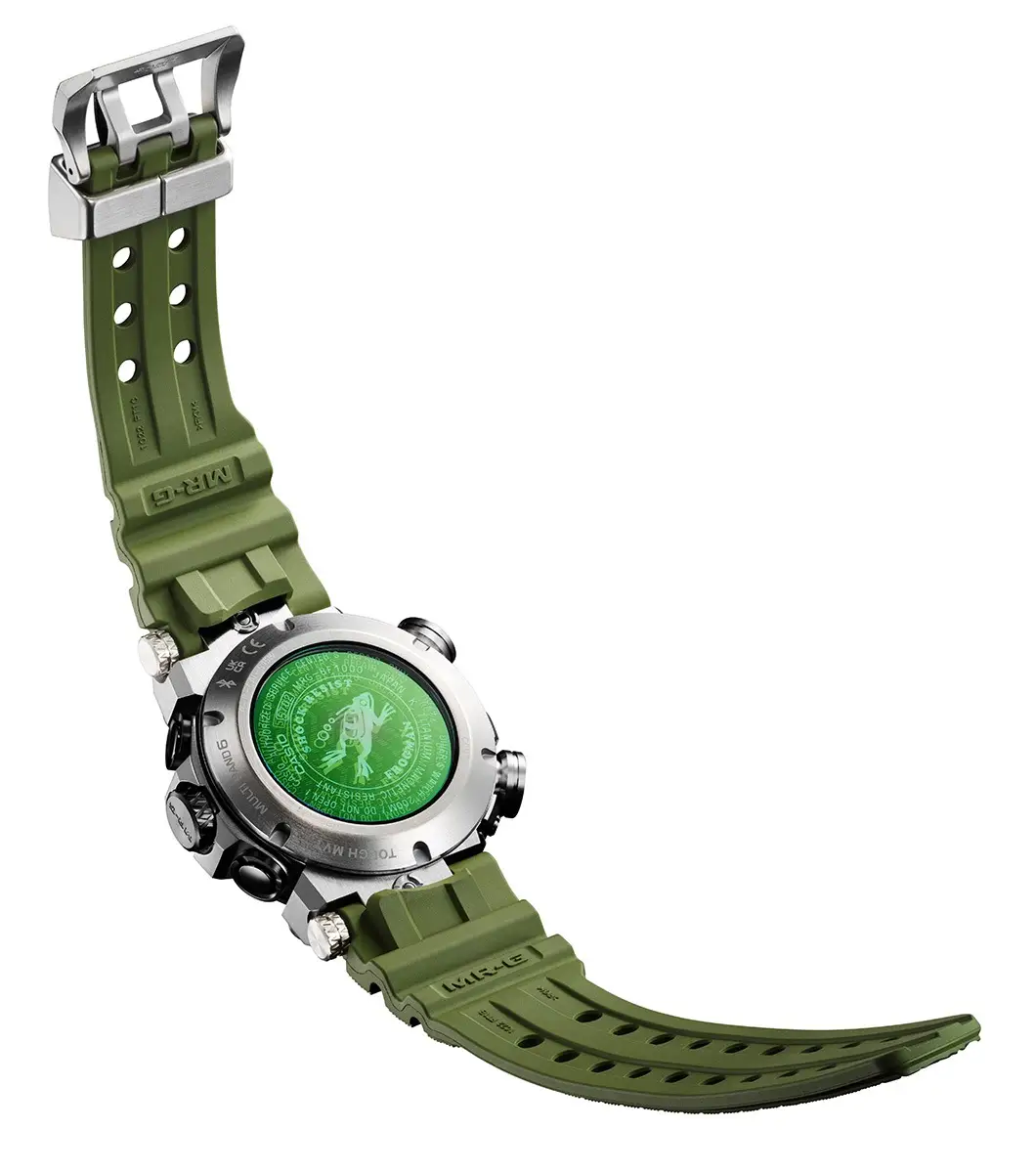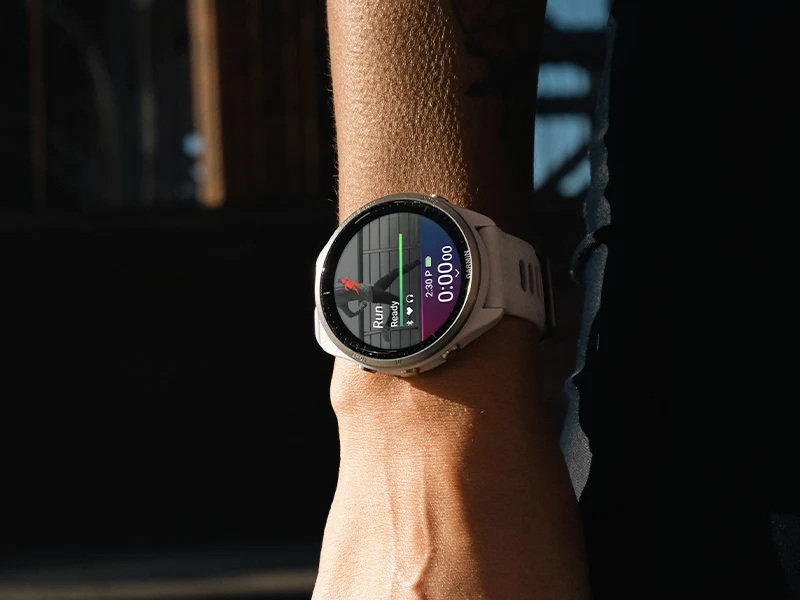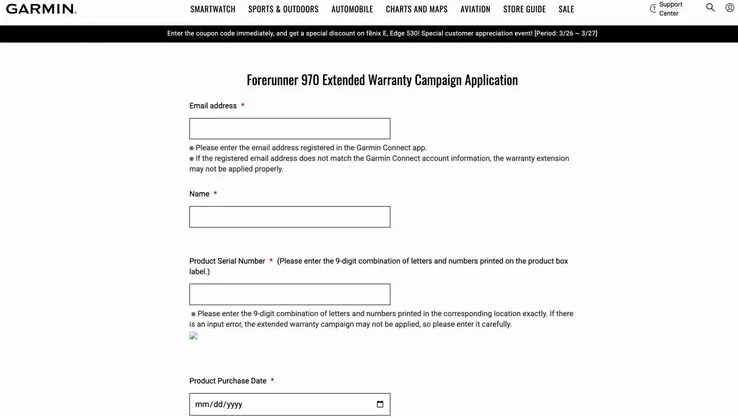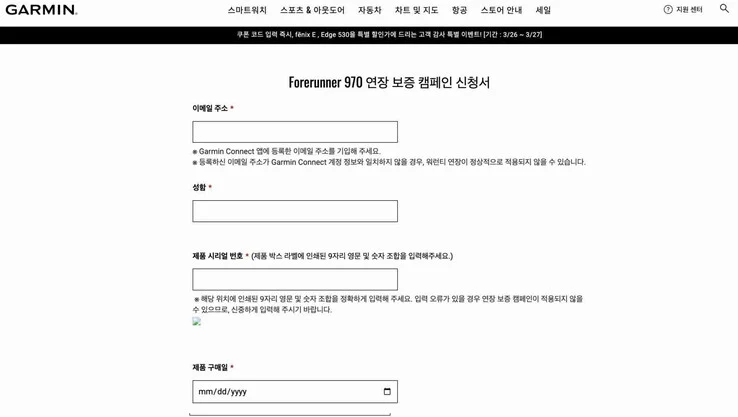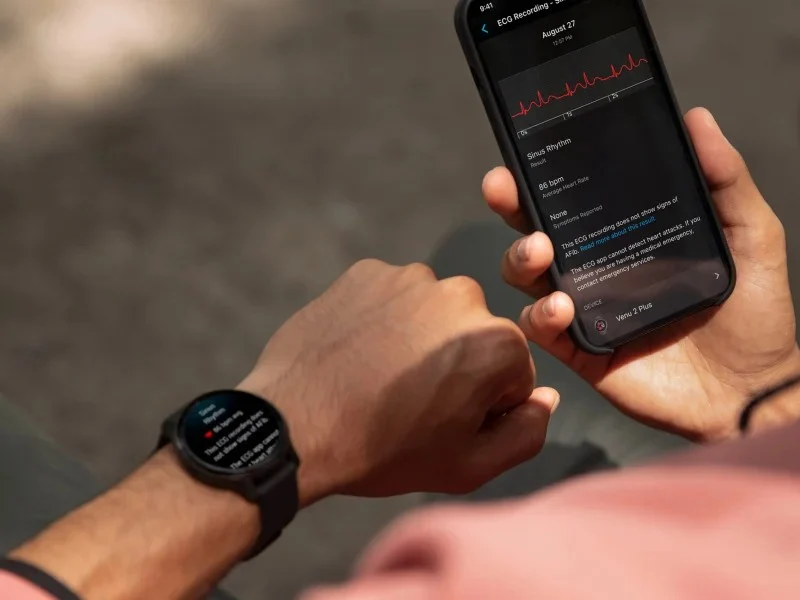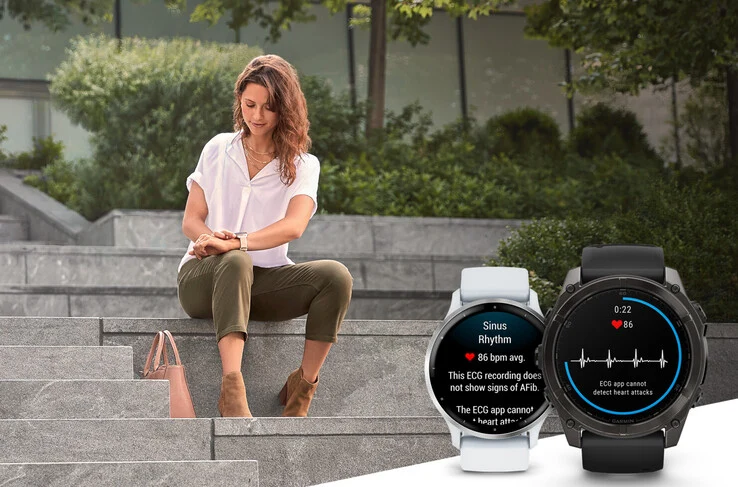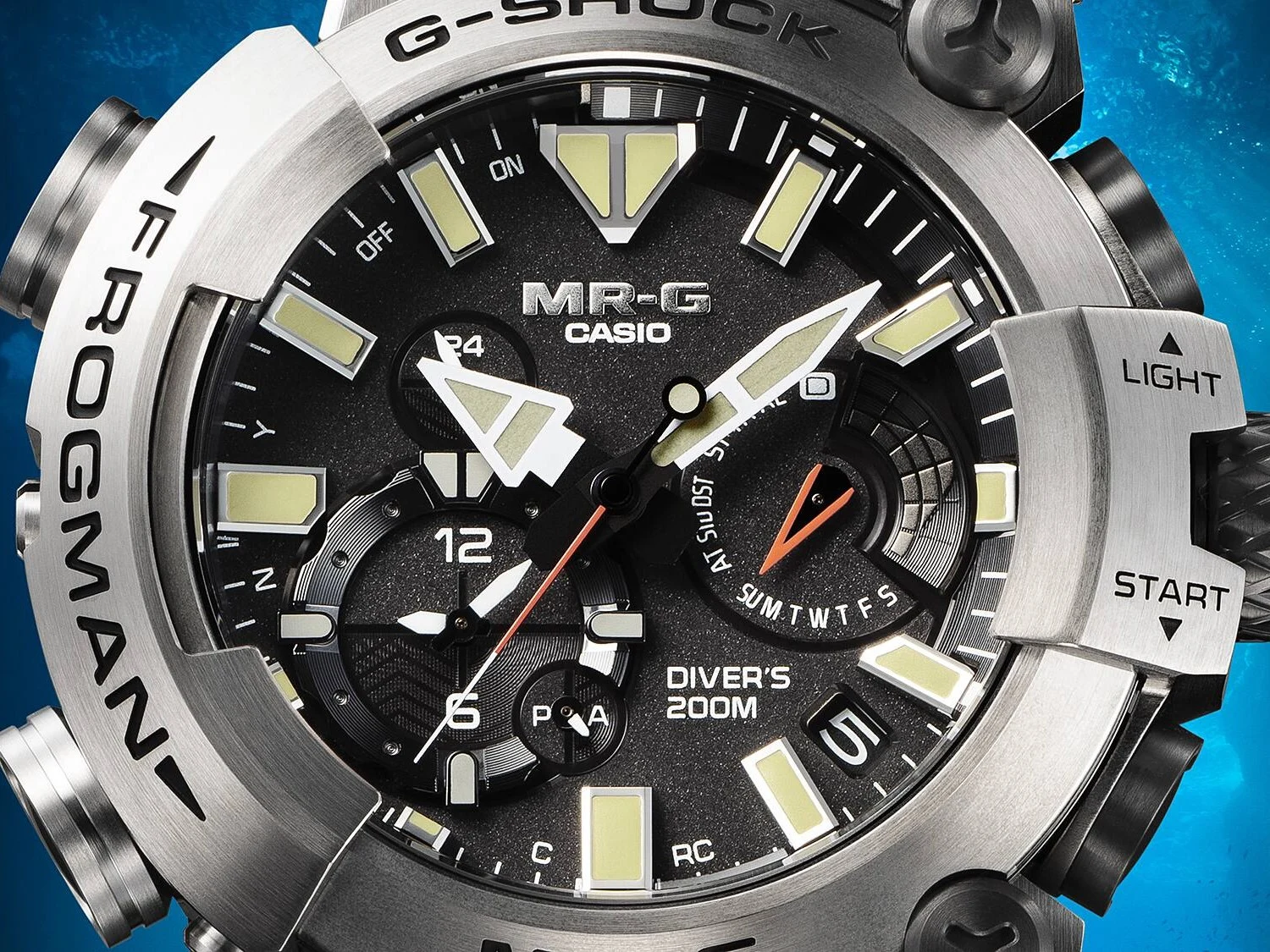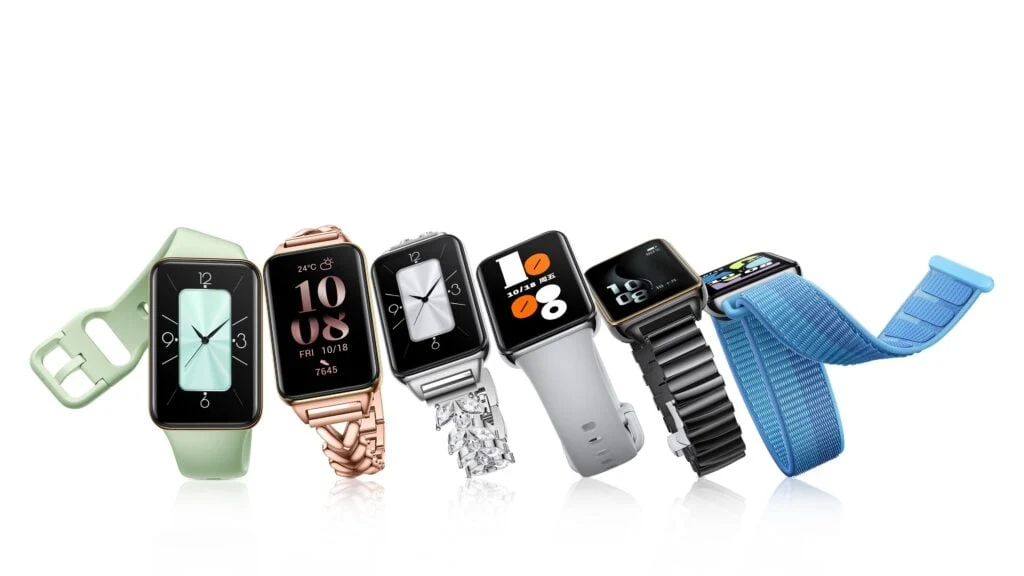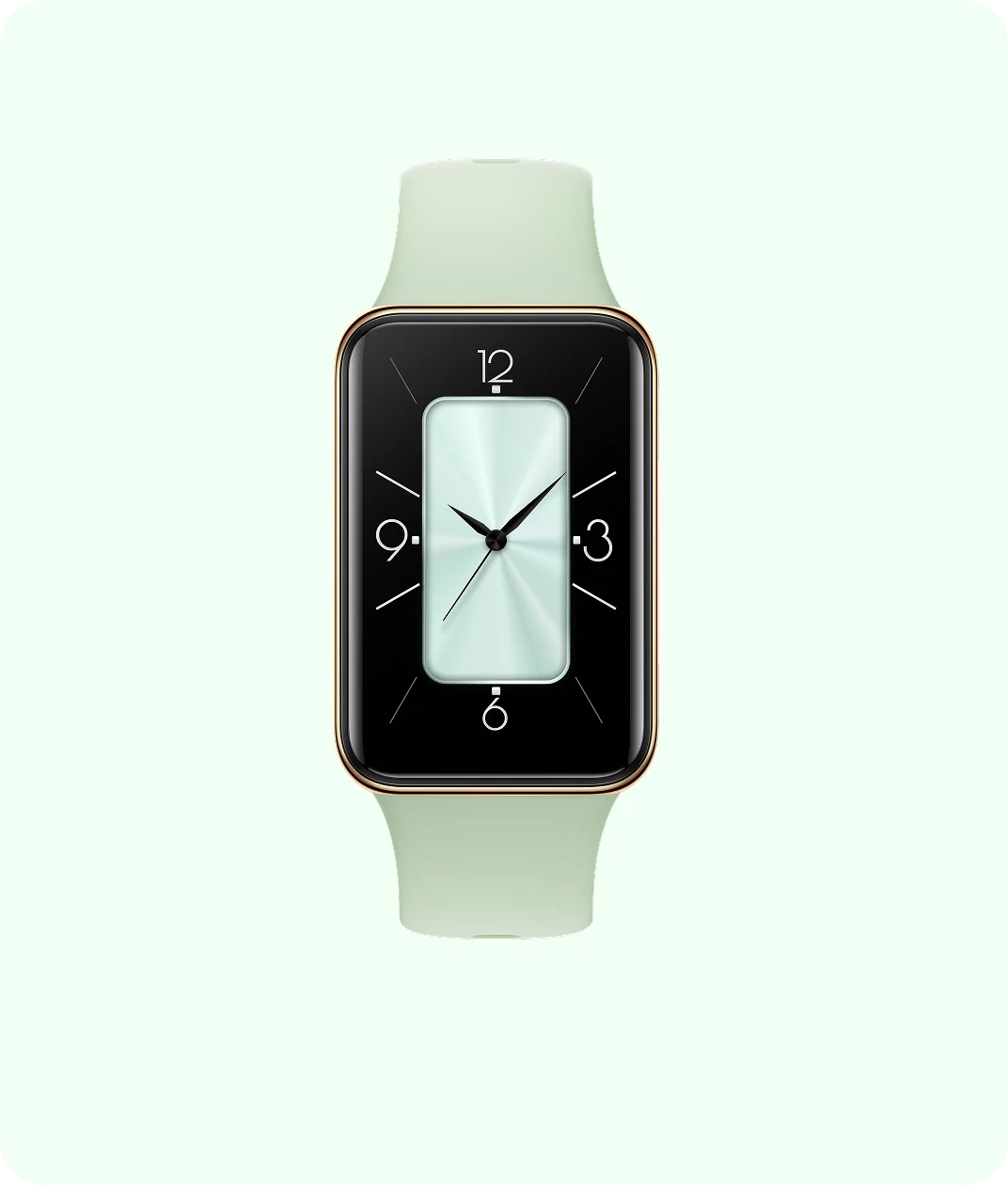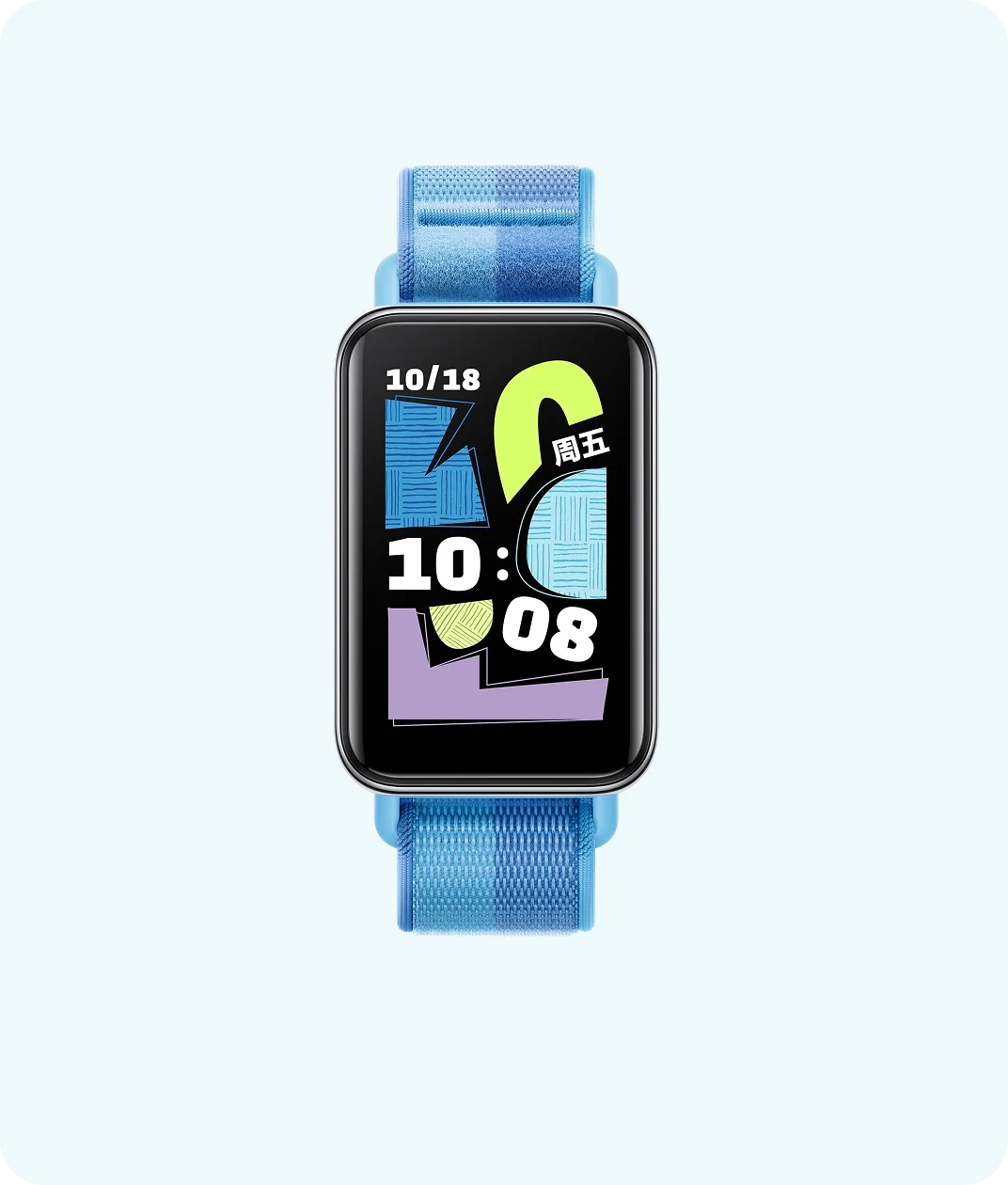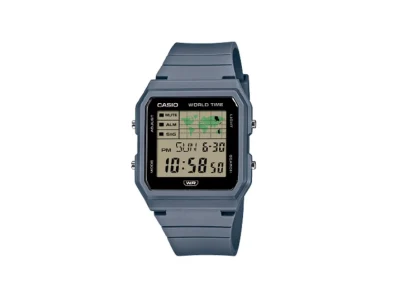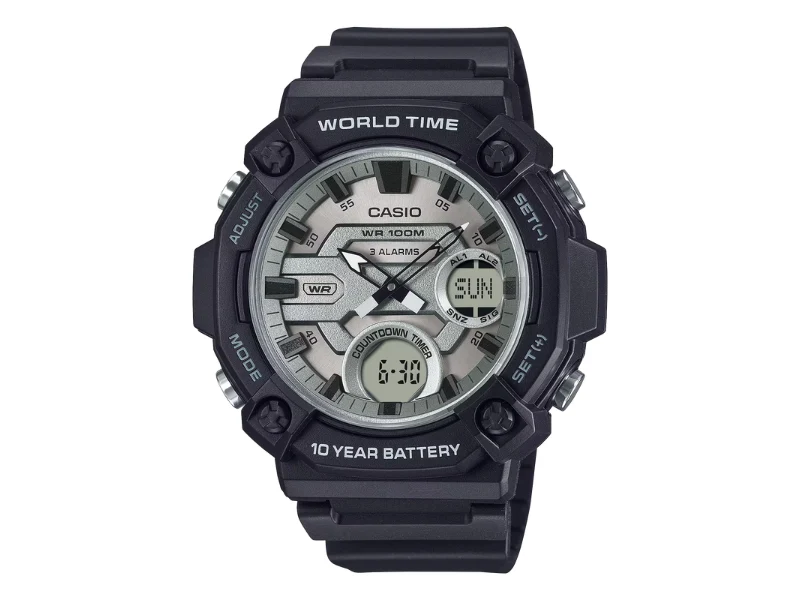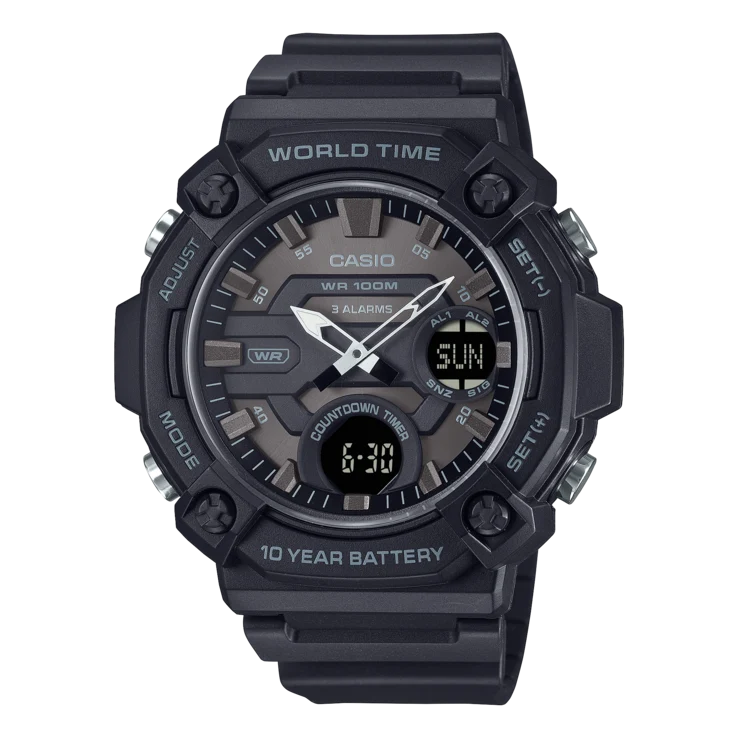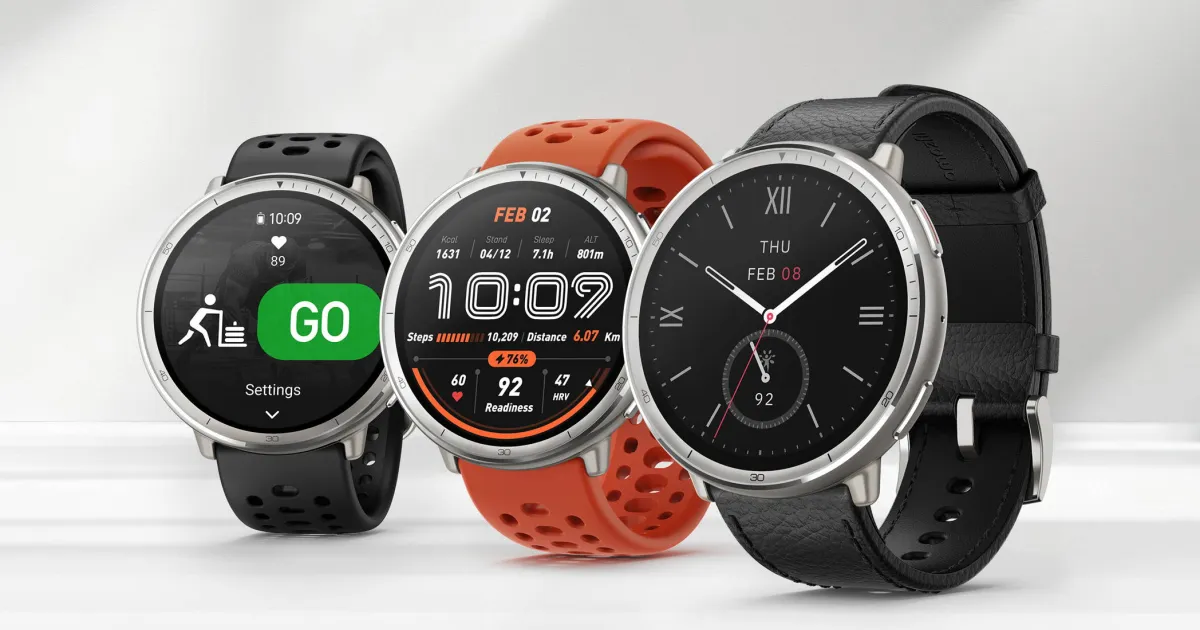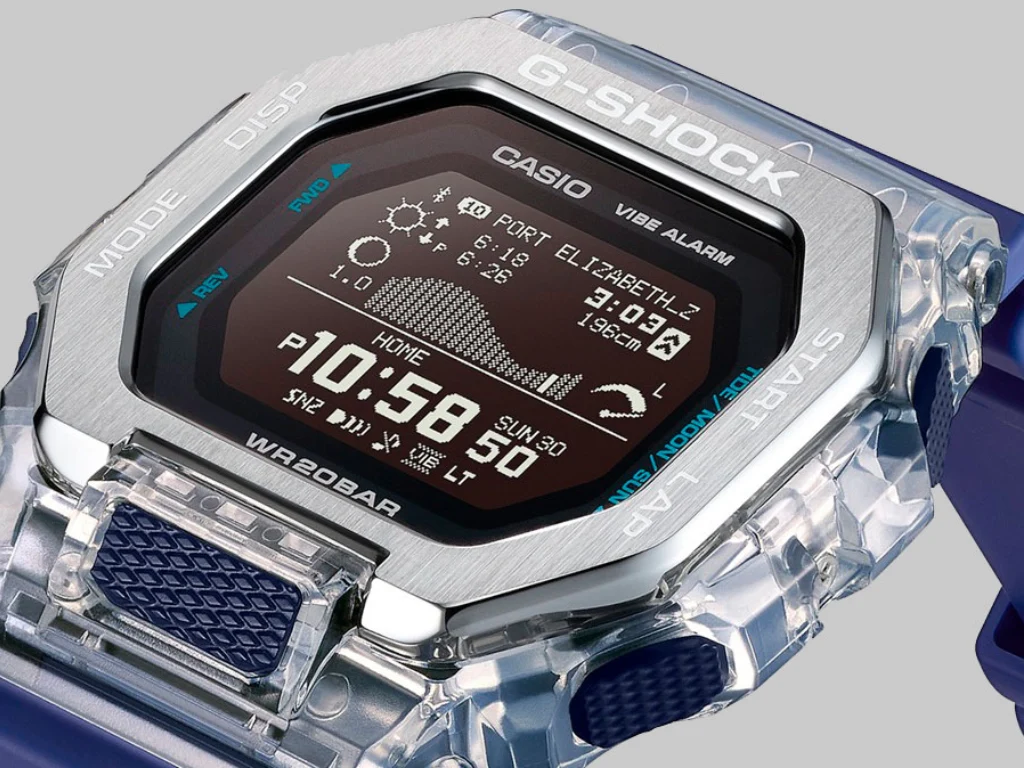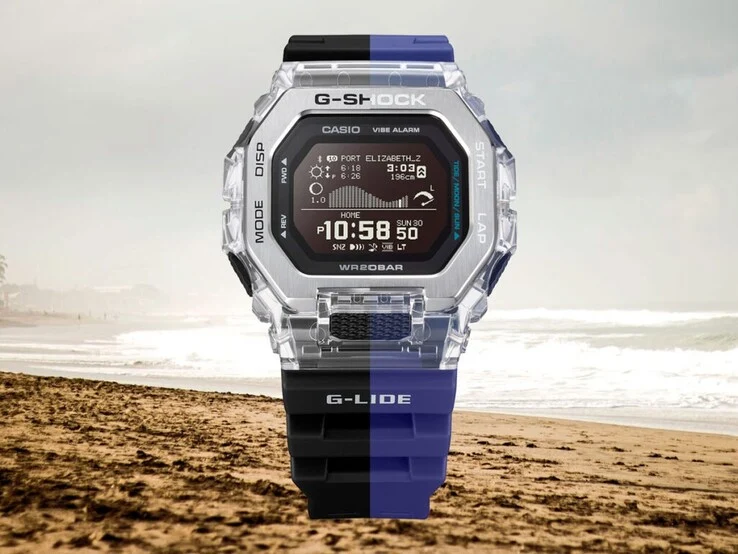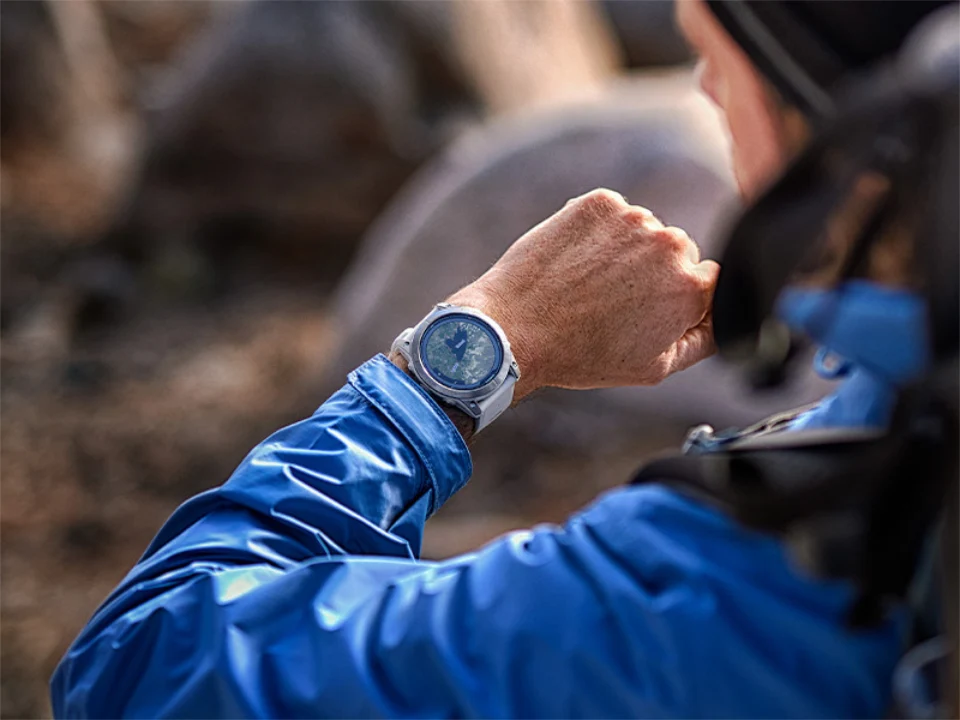Key Takeaways
1. Release and Pricing: The G-Shock MRG-BF1000RG-3A Goliath Frogman will be released in the UK for £4,400, making it the most affordable in the MRG-BF1000 series, with other models priced higher.
2. Nature-Inspired Design: The watch’s design is inspired by the goliath frog, featuring a khaki Dura Soft fluororubber strap with orange accents and beige Neobrite-coated hands for underwater visibility.
3. Durability and High-Tech Features: It includes a green-tinted sapphire crystal case back, shock resistance features, and is constructed from lightweight, rust-resistant titanium with a titanium carbide coating for wear protection.
4. Functionality: Equipped with Dive Mode, an analogue Tide Graph, diving log, stopwatch, countdown timer, alarms, dual time display, and a hand shift function for LCD visibility.
5. Connectivity and Power: The watch connects to the CASIO WATCHES app via Bluetooth, utilizes solar and wireless charging with TOUGH SOLAR technology, and includes Super LED illumination and 200-meter water resistance.
Casio has announced the upcoming release of the G-Shock MRG-BF1000RG-3A Goliath Frogman in the UK. This watch is set at a price of £4,400 (about $5,838), making it the most affordable option in the MRG-BF1000 series. In comparison, the other models, MRG-BF1000R-1A and MRG-BF1000B-1A, come with price tags of £4,500 and £5,200, respectively. Additionally, the G-Shock MRG-BF1000RG-3A Goliath Frogman will hit the shelves in Japan starting May 23, with a suggested retail price of 572,000 yen (around $3,986).
Unique Design Inspired by Nature
The design draws inspiration from the goliath frog, the world’s largest amphibian. It features a khaki Dura Soft fluororubber strap, accented with orange highlights, and beige Neobrite-coated hands and indices for enhanced visibility while underwater. Constructed from lightweight, rust-resistant titanium, the case comprises over 70 components. It boasts a screw-lock crown and case back to improve water resistance. A titanium carbide coating along with a deep-hardening treatment safeguards the case against wear.
High-Tech Features and Durability
This watch showcases a green-tinted sapphire crystal case back and includes hand-painted glow-in-the-dark elements. The Frogman logo is elegantly engraved on the case. To boost shock resistance, a buffered crown and Clad Guard Structure are implemented. The strap is designed for easy replacement, while the titanium alloy buckle and button guards lend added durability.
The G-Shock MRG-BF1000RG-3A comes equipped with Dive Mode to monitor dive time and surface intervals, alongside an analogue Tide Graph for checking tide levels. It features a diving log, a 24-hour stopwatch, countdown timer, daily alarm, dual time display, auto calendar, and a hand shift function that allows the hands to move aside for a clear view of the LCD.
Connectivity and Power
This watch connects to the CASIO WATCHES app via Bluetooth. The MRG-BF1000RG-3A utilizes solar and wireless charging with TOUGH SOLAR technology. It boasts Super LED illumination, a water resistance of 200 meters, magnetic resistance, and a weight of 132 grams.
Moreover, Casio is also introducing limited-edition G-Shock GA-B2100 watches to commemorate the 10th anniversary of the beloved anime, Haikyu!!. These two models are inspired by the rival teams Karasuno and Nekoma, showcasing team colors, player jersey numbers, and distinctive slogans. Both models are equipped with Bluetooth, Tough Solar, and world time features.
